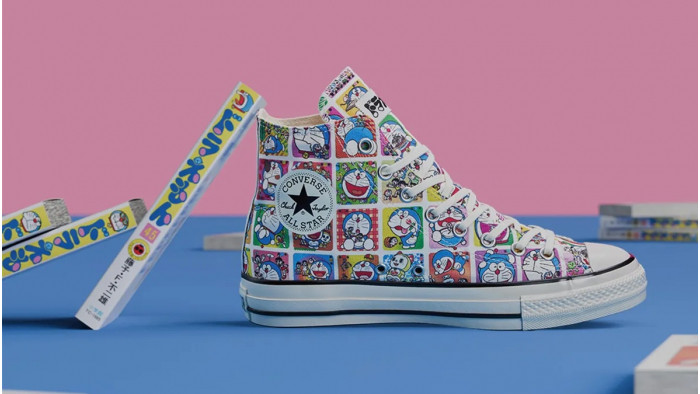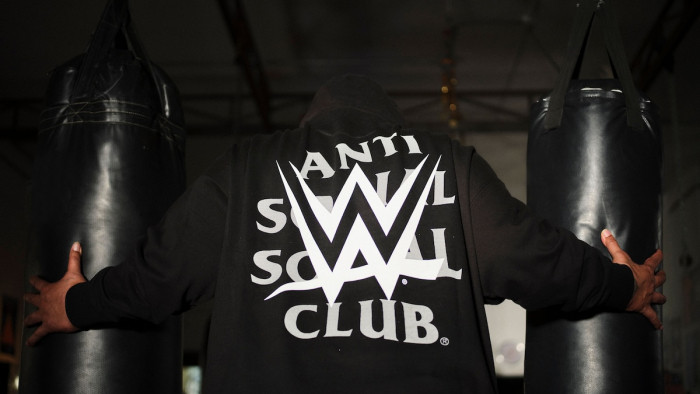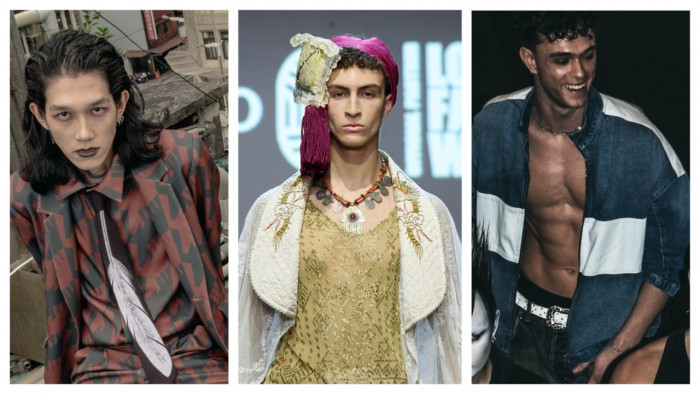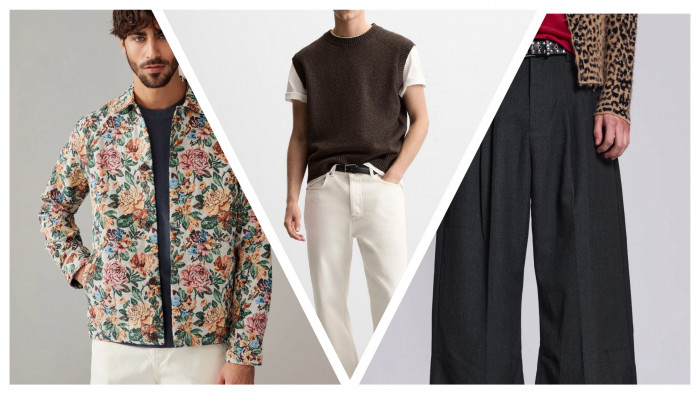"The saddest part is I’m too scared to wear it": What makes someone spend £20,000 on streetwear?
How resale apps are fueling a new kind of male addiction


“I’ve got them!” my boyfriend yells from the bathroom. He isn’t talking about securing gig tickets or finding his keys, but instead has just bought a sold out pair of adidas x Pharrell Williams NMDs. On his phone. In the bath. Like many young men, he feels that ‘copping’ a rare item is something worth shouting about.
Over the past few years, reselling clothes has become big business. The global fashion resale market is set to overtake fast fashion, hitting £30 billion by 2022. And while eBay is still the leader, accounting for over 90% of current sales, a number of other sites and apps have captured the hearts of hypebeasts.
Teenagers are flocking to Depop, Instagram and Facebook’s buy and sell groups while a slightly older audience opt for more authenticated sites like Grailed, Stadium Goods and StockX. Each online marketplace has a slightly different way of doing things, but the message is the same: be quick or it’s gone.

A screenshot from the Grailed app
Supreme is one of the main brands touted by resellers. Since the ‘90s, the New York-based label has courted a cult skater following who willingly queue up outside stores every week for the latest drop. Now, times have changed. While you’ll still find box logo-wearers loitering around Soho every Thursday at 11am, Supreme’s global fanbase prefer to shop online. Entire collections regularly sell out in under a minute – mainly thanks to automated bots created by tech-savvy teens. Disappointed buyers can simply head to a resale site five minutes after launch time to find every item waiting to be snapped up at a heavily inflated price.
In this environment, it’s easy for anyone to become a kid in a candy store. Eyes light up, lust kicks in and any notion of financial stability goes out the window. I asked a number of men on Reddit’s foremost streetwear forum, r/streetwear, for their stories, and was inundated with eye-watering tales.
“It’s definitely an addictive app, I get a buzz every time”
Max is 18 and currently studying in Kent. He estimates that he has spent well over £10,000 since first buying resale items at the age of 14, and says his retail job provides him with enough funds to spend between £200 and £800 a month on trainers and clothes. “I use eBay, Depop and Facebook groups daily to buy Bape and Supreme as well as more high-end brands like Off-White, Comme des Garçons and Helmut Lang,” he tells Shortlist. “I usually browse in the evening in bed. It’s very relaxing.”
A Danish teenager tells me that he’s spent almost £20,000 on resale in the past two years. He would rather remain anonymous but adds: “I made the money myself, but could definitely have spent it more wisely. I shop when I’m bored, and you’re bored a lot when you suffer from melancholic depression.”
This unique method of relaxation is something I’ve witnessed with my own eyes. Since introducing my boyfriend to Grailed just over a month ago, he has spent almost £1000 on three pairs of trainers, a Supreme hoodie and two Palace Tri-Ferg tees. He suffers from anxiety and admits to scrolling when feeling bored or stressed: “It’s definitely an addictive app, I get a buzz from it every time.”

A pair of Nike Air Max
Grailed is used by almost every resale buyer I speak to. The site (and subsequent app), which launched in 2013, aimed to democratise the reselling process. And it’s done an incredible job: The Business of Fashion estimates the company’s annual revenues are over £6 million. Buyers can source vintage items and pick up brand new pieces from the likes of Supreme, Palace and Gucci. Unlike eBay, there is no bidding process. Instead, sellers set a price which can be upped or reduced depending on demand. A buyer can then accept the given price or make an offer. Once the seller agrees, the buyer must pay up and Grailed takes its 6% commission.
It’s easy to see how addiction sets in. Making countless offers requires no financial commitment but when that final yes is delivered, it’s hard to resist tapping the ‘purchase’ button. A Chicago-based teacher, who spends around £750 a month on resale, believes that the frequency at which sites and groups are updated doesn’t help. “The ‘new’ feed is alluring and keeps you checking to hopefully snag a good deal before someone else sees it,” he says. “That thrill is similar to copping on drop day.”
22-year-old Chris is well aware of this faux high. “These sites can mess with people’s perception of value,” he says. “If you see something that has had five price drops, it looks like an incredible deal. But in reality, the piece may never have been worth that much to begin with.” The same goes for social media reselling. Once you know the lingo (‘b’ means bump, ‘WTS’ is want to sell, ‘DSWT’ equals deadstock with tags), a quick direct message will win you your dream item. But one look at your bank statement and you’re in for a nasty comedown.
“You waste all your money on clothes that you don’t really need”
Streetwear culture in itself promotes addiction. With most brands utilising the concept of weekly or monthly ‘drops’ that often sell out, fans of Supreme have no choice but to develop quick thinking skills. As one streetwear buyer told me: “The cycle continues on and on with every drop. With resale sites, you might stumble upon a rare piece or good price and think you need to buy it before someone else does. This mentality causes you to waste all your money on clothes that you don’t really need.”
Spiralling into debt is now becoming a common worry among resale buyers. One woman recalled how a friend spends the majority of his minimum wage earnings on Supreme and Yeezy, foregoing date nights for an evening with a bowl of ramen.
Most men I speak to say they know when to stop cashing out, but quite a few confess to being disappointed with their over-the-top purchases, making you wonder what the whole point is. “They were nice shoes, but holding them in my hands I realised that I couldn’t really justify spending that much,” relays one buyer who spent £500 on Off-White x Nike Air VaporMaxes. Similarly, last year, Max purchased a Supreme x The North Face jacket for just over £700. “The saddest part is I’m too scared to wear it in case I damage it,” he says.
British men spend 43 per cent more on clothes each month than women
The concept of a man spending a fortune on his appearance is pretty modern. In the 90s and early 2000s, pop culture bombarded us with images of men beleaguered and disgruntled at the idea of spending hours in a shop. So what’s changed? A study conducted earlier this year found that British men spend 43 per cent more on clothes each month than women, shelling out an average of £115.
Fashion psychologist and founder of The Psychology of Fashion blog, Shakaila Forbes-Bell, believes that the core of this newfound male behaviour is the “evolutionary impulse to mate.” She argues that buying and showing off expensive goods, otherwise known as ‘peacocking’, is simply done to impress others. “In nature, even though the male peacock is attracting potential predators by flashing his brightly coloured tail, the increased possibility of attracting a potential suitor makes it all worth the risk,” she says. “It’s the same for men. In this competitive era of dating, even if spending a fortune on clothes and trainers may do serious damage to the bank account, the ability to say ‘hey, I’m so resourceful that I can almost throw money away’ is a serious motivational factor when it comes to men’s spending habits.”
This rise in male spending is showing no sign of slowing down. When streetwear first began, it was a tight-knit community bound together by a love of cult brands. Now, it’s evolved into a global behemoth with formally niche companies like Supreme morphing from indie labels into billion dollar brands. Trainers originally designed for sport are now the ultimate fashion statement; even regular styles from adidas and Nike have gone from an affordable £30 to upwards of £150.

Supreme’s London store on ‘drop day’
Millennials in particular may be so disillusioned with adult life that they would rather cash out on materialism than sensibly save up for their future. That house deposit may be out of reach but Virgil Abloh’s The Ten? Not so much. Max says that hitting rock bottom more than once, buying a car and paying rent “were the reality checks [he] needed to make better financial decisions in life.” However, he still finds himself with “low funds” every now and then.
Some young men are well aware of the pitfalls of the resale market, only choosing to enter it as a seller. 18-year-old Peter hails from South Korea and has made enough money from reselling to pay for a sizeable chunk of his university degree. He says he would rather buy fakes than pay the prices that some buyers do. Tioluwani, also 18, moved from Nigeria to the UK and views reselling as “a way of living. It’s easy money.” Others act as both buyer and seller in the hope that copping something at a 1000% markup will guarantee a profit in the future.
What’s clear is that buying resale has become more than a hobby. Many men openly call it an addiction. Comparing a love of purchasing secondary fashion to an obsession with alcohol or drugs may seem foolish, but the emotional effects are the same.
“I myself am addicted to the ‘collectability’ of the items, their uniqueness, the effect they’ve had on me growing up and the confidence boost I get when I wear a nice outfit,” says Max. The relationship between looking good and self-esteem makes it all too easy to fall into financial disarray.
For resale devotees, a sense of self-awareness and an ability to prioritise can go a long way towards a debt-free life. Failing that, anyone like my partner, who just can’t seem to stop, may well benefit from deleting some apps.
(Pics: Unsplash, Grailed, Getty)








